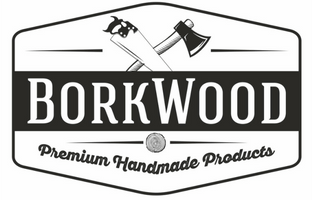Integrating SaaS with existing systems
Ever wondered what SaaS integration is all about? In today’s fast-paced digital world, businesses are constantly on the lookout for ways to enhance their operations and stay ahead of the competition. That’s where SaaS, or Software as a Service, comes into play. But how do you make sure all these different SaaS applications work together seamlessly? That’s exactly what we’re going to dive into.
In this article, we’ll explore what SaaS integration is and why it’s essential for your tech stack. We’ll cover the benefits of integrating SaaS, the challenges you might face, and the best practices to ensure everything runs smoothly. By the end of our discussion, you’ll have a solid understanding of how to make the most out of SaaS integration for your business.
What is SaaS Integration?
So, let’s start with the basics. SaaS integration is all about connecting your SaaS applications with other software systems. Think of it like getting all your favorite apps on your phone to sync and talk to each other perfectly. Whether it’s your CRM (Customer Relationship Management) system, your marketing tools, or your accounting software, SaaS integration makes sure they all play nicely together. This means smoother workflows, less manual data entry, and more time for you to focus on what really matters.
Why Should You Integrate SaaS into Your Tech Stack?
Now, you might be wondering, why go through the hassle of integrating all these systems? Great question! Here are a few reasons why integrating SaaS into your tech stack can be a game-changer for your business:
- Enhanced Efficiency and Productivity: Imagine automating those tedious tasks that take up so much of your time. With SaaS integration, you can streamline processes and reduce the need for manual data entry. This means you and your team can focus on more important tasks, boosting overall productivity.
- Cost Savings: Let’s face it, maintaining on-premises infrastructure can be expensive. By moving to SaaS solutions and integrating them, you can cut down on these costs. Plus, SaaS offers flexible pricing models, so you can scale up or down based on your needs without breaking the bank.
- Scalability and Flexibility: As your business grows, your tech needs will evolve. SaaS integration makes it easier to scale your operations. Whether you’re expanding your team or adding new features, integrated SaaS solutions provide the flexibility to adapt to changing demands seamlessly.
- Improved Collaboration: When your tools and systems are integrated, sharing data and insights becomes a breeze. This leads to better collaboration across departments, as everyone has access to the same up-to-date information. It’s like having everyone on the same page, all the time.
What Are the Steps to Integrate SaaS into Your Tech Stack?
Integrating SaaS into your tech stack might sound like a daunting task, but breaking it down into manageable steps can make the process much smoother. Here’s a step-by-step guide to help you navigate through:
- Assessing Business Needs: First things first, you need to understand what your business actually needs. What problems are you trying to solve? What processes need improvement? By identifying your pain points, you can choose the right SaaS solutions that align with your business goals.
- Evaluating Existing Systems: Take a good look at your current systems and infrastructure. What tools are you already using? How do they fit into your overall workflow? This evaluation will help you understand what integrations are necessary and how they will impact your existing setup.
- Defining Integration Goals and Objectives: Clearly define what you hope to achieve with the integration. Are you looking to automate specific tasks, improve data accuracy, or enhance collaboration? Having clear goals will guide your integration strategy and help measure success.
- Selecting the Right SaaS Solutions: With your needs and goals in mind, start researching and selecting SaaS solutions that best fit your requirements. Look for compatibility with your existing systems, ease of integration, and the specific features that will benefit your business.
- Planning the Integration Process: Once you’ve selected your SaaS solutions, it’s time to plan the integration. This involves mapping out how the different systems will connect, what data will be shared, and any potential roadblocks. Creating a detailed integration plan ensures a smoother implementation.
- Executing the Integration: Now comes the actual integration. This might involve using APIs, middleware, or direct database connections, depending on your setup. It’s important to follow your plan closely and address any issues that arise promptly.
- Testing and Quality Assurance: After the integration is complete, thorough testing is crucial. Make sure all systems are communicating properly, data is syncing correctly, and everything is functioning as expected. This step helps catch any glitches before they affect your operations.
- Training and Support: Finally, ensure that your team is trained on the new integrated systems. Provide ongoing support to address any questions or issues that may come up. Proper training ensures that everyone can make the most out of the integrated solutions.
Benefits of Integrating SaaS
Now that you know the steps to integrate SaaS, let’s dive into the benefits you can expect. Integrating SaaS into your tech stack can bring numerous advantages that can transform your business operations. Here’s how:
Enhanced Efficiency and Productivity
Integrating SaaS applications can significantly boost your efficiency and productivity. By automating routine tasks and ensuring seamless data flow between systems, you reduce the need for manual data entry and repetitive work. This means your team can focus on more strategic tasks, driving innovation and growth.
Cost Savings
One of the biggest advantages of SaaS is the potential for cost savings. SaaS solutions typically require lower upfront costs compared to traditional on-premises software. Plus, you save on maintenance, upgrades, and infrastructure costs. With flexible subscription models, you can scale your usage up or down based on your needs, optimizing your spending.
Scalability and Flexibility
As your business grows, so do your technology needs. SaaS solutions are inherently scalable, allowing you to add or remove features and users as needed. This flexibility ensures that your tech stack can evolve with your business, without the hassle of overhauling your entire system.
Improved Collaboration
With integrated SaaS applications, data and insights are easily shared across departments. This fosters better collaboration and communication within your organization. Teams can access the same information in real-time, leading to more informed decision-making and a more cohesive working environment.
What Challenges Can Arise During SaaS Integration?
We’ve covered the steps and benefits of SaaS integration. But let’s be real – it’s not always a smooth ride. There are some challenges you might encounter along the way. Knowing these in advance can help you prepare and navigate through them effectively. Here are a few common challenges:
Data Security Concerns
When integrating multiple SaaS applications, ensuring data security becomes paramount. Transferring data between systems can create vulnerabilities if not handled properly. It’s essential to implement robust security measures, such as encryption and secure APIs, to protect sensitive information.
Compatibility Issues
Not all SaaS applications are designed to work seamlessly together. Compatibility issues can arise, causing disruptions in data flow and system performance. It’s crucial to thoroughly assess the compatibility of your existing systems with the new SaaS solutions before integration.
Data Migration Complexities
Migrating data from one system to another can be a complex and error-prone process. Data inconsistencies, loss, or corruption can occur during migration. Careful planning and execution, along with comprehensive data validation checks, are necessary to ensure a smooth migration.
Vendor Lock-In
Relying heavily on a particular SaaS provider can lead to vendor lock-in, where switching to another provider becomes difficult and costly. To avoid this, consider solutions that offer flexibility and interoperability with other platforms.
How Should You Plan for SaaS Integration?
Now that we know the challenges, let’s talk about how to plan effectively for SaaS integration. A well-thought-out plan can make a world of difference. Here’s how you can get started:
Assessing Business Needs
Start by identifying what your business needs. What are the pain points you’re trying to address? What processes need improvement? Understanding these needs will help you select the right SaaS solutions and define your integration goals.
Evaluating Existing Systems
Take a close look at your current systems and infrastructure. What tools are you already using? How well do they fit into your overall workflow? This evaluation will help you understand what integrations are necessary and how they will impact your existing setup.
Defining Integration Goals and Objectives
Clearly define what you hope to achieve with the integration. Are you looking to automate specific tasks, improve data accuracy, or enhance collaboration? Having clear goals will guide your integration strategy and help measure success.
Selecting the Right SaaS Solutions
With your needs and goals in mind, start researching and selecting SaaS solutions that best fit your requirements. Look for compatibility with your existing systems, ease of integration, and the specific features that will benefit your business. Noteeffective4761
What Are the Different Integration Strategies for SaaS?
Once you have a plan, the next step is to decide on the best integration strategy. Different scenarios call for different approaches. Here are some common strategies:
API-Based Integration
APIs (Application Programming Interfaces) are a popular choice for SaaS integration. They allow different software systems to communicate and share data efficiently. By leveraging APIs, you can create custom integrations tailored to your specific needs.
Middleware Solutions
Middleware acts as a bridge between different software systems, enabling them to communicate and work together. This approach can simplify complex integrations and provide a centralized platform for managing data flow and system interactions.
Direct Database Integration
In some cases, integrating directly at the database level might be the best option. This involves connecting the databases of different systems to enable data sharing. While this method can offer robust integration, it requires careful planning and technical expertise to ensure data consistency and security.
Custom Integration Solutions
For unique business needs, custom integration solutions might be necessary. This involves developing bespoke software or scripts to connect your systems. Custom integrations provide the highest level of flexibility but can be more time-consuming and costly to implement.
What Are the Different Integration Strategies for SaaS?
When it comes to integrating SaaS solutions into your tech stack, choosing the right strategy is crucial for success. Different businesses have different needs, and the integration strategy should align with those needs. One popular approach is API-Based Integration, which leverages Application Programming Interfaces to enable different software systems to communicate and share data efficiently. This method allows for custom integrations tailored to specific requirements, offering flexibility and control.
Another effective strategy is Middleware Solutions. Middleware acts as a bridge between various systems, facilitating data exchange and ensuring interoperability. This approach simplifies complex integrations and provides a centralized platform for managing data flow, which can be particularly useful for businesses with diverse software ecosystems.
Direct Database Integration is another option, where systems are connected at the database level to share data directly. This method can be highly efficient and robust, but it requires careful planning and technical expertise to maintain data consistency and security. Finally, for businesses with unique needs, Custom Integration Solutions might be the way to go. Developing bespoke software or scripts to connect systems offers the highest level of flexibility, though it can be more time-consuming and costly to implement.
Key Considerations for Successful Integration
Successfully integrating SaaS solutions requires careful planning and attention to several key factors. Data Synchronization and Consistency is critical; ensuring that data remains accurate and up-to-date across all integrated systems is essential for reliable operations. Any discrepancies can lead to errors and inefficiencies, so it’s important to establish robust synchronization mechanisms.
Ensuring Data Security and Compliance is another vital consideration. With data flowing between multiple systems, the risk of breaches and compliance issues increases. Implementing strong security measures, such as encryption and secure APIs, and adhering to relevant regulations can help mitigate these risks.
Monitoring and Maintenance of the integrated systems are also crucial. Continuous monitoring ensures that the integration operates smoothly and any issues are promptly addressed. Regular maintenance helps keep the systems updated and functioning optimally, preventing disruptions.
Finally, providing Training and Support to your team is essential. Employees need to understand how to use the integrated systems effectively and how to troubleshoot common issues. Ongoing support ensures that any problems can be quickly resolved, minimizing downtime and maintaining productivity.
What Are the Best Practices for SaaS Integration?
Adhering to best practices can significantly enhance the success of your SaaS integration efforts. Conducting a Thorough Needs Analysis is the first step. Understanding your business requirements and identifying the specific problems you aim to solve will guide your integration strategy and help you select the right SaaS solutions.
Choosing Scalable and Compatible Solutions is also important. Ensure that the SaaS applications you select can grow with your business and are compatible with your existing systems. This compatibility reduces the risk of integration issues and makes scaling easier.
Testing and Quality Assurance are crucial steps in the integration process. Thorough testing ensures that all systems are communicating correctly, data is syncing properly, and everything functions as expected. This helps catch any issues early and ensures a smooth implementation.
Finally, Regularly Reviewing and Updating Integrations is essential for long-term success. Technology and business needs evolve, so it’s important to periodically review your integrations to ensure they continue to meet your requirements. Updating and optimizing your integrations can enhance performance and adapt to changing conditions.
Future Trends in SaaS Integration
As we look to the future, the landscape of SaaS integration is set to evolve with several exciting trends on the horizon. These trends promise to enhance how businesses integrate, manage, and leverage SaaS solutions, driving further efficiencies and innovations.
One of the most significant trends is the Increasing Use of AI and Machine Learning in SaaS integration. AI and ML can automate and optimize various aspects of the integration process, from data mapping and transformation to real-time error detection and correction. These technologies enable more intelligent, self-healing integrations that can adapt to changes in data and workflows without manual intervention. By leveraging AI, businesses can achieve more seamless and efficient integrations, reducing the time and effort required to maintain them.
Another trend gaining momentum is the Growth of Integration Platforms as a Service (iPaaS). iPaaS solutions provide a comprehensive platform for connecting disparate SaaS applications and on-premises systems. They offer pre-built connectors, templates, and tools that simplify the integration process, making it more accessible to businesses of all sizes. As iPaaS platforms continue to mature, they are becoming more feature-rich and user-friendly, allowing businesses to integrate their systems quickly and with minimal technical expertise.
Emerging Standards and Protocols are also shaping the future of SaaS integration. As more businesses adopt SaaS solutions, the need for standardized integration methods becomes increasingly important. Standards such as RESTful APIs, OAuth for authentication, and JSON for data interchange are becoming more widely accepted and implemented. These standards facilitate easier and more consistent integrations, reducing the complexity and variability that often accompany custom integration solutions.
In addition, we’re seeing a trend towards Greater Emphasis on Security and Compliance in SaaS integration. With the growing prevalence of data breaches and stringent regulatory requirements, businesses are prioritizing secure integration practices. This includes implementing advanced encryption techniques, adopting zero-trust security models, and ensuring compliance with regulations like GDPR and CCPA. As a result, future SaaS integrations will need to be designed with security and compliance at their core.
Finally, the Rise of Low-Code and No-Code Integration Tools is democratizing the integration process. These tools enable non-technical users to create and manage integrations using visual interfaces and drag-and-drop functionality. By reducing the reliance on specialized IT resources, low-code and no-code tools empower business users to quickly connect their SaaS applications and automate workflows, fostering greater agility and innovation.
In summary, the future of SaaS integration is poised to be shaped by advancements in AI and machine learning, the proliferation of iPaaS solutions, the adoption of emerging standards, a heightened focus on security and compliance, and the rise of low-code and no-code integration tools. These trends will make integrations more intelligent, accessible, and secure, enabling businesses to harness the full potential of their SaaS ecosystems.
Why Should You Hire a Dedicated SaaS Integration Company?
When integrating SaaS solutions into your existing systems, hiring a dedicated SaaS integration company can be a game-changer for your business. Here’s why this could be a highly beneficial move:
Integrating SaaS applications can be complex, often demanding specialized knowledge and technical expertise. A dedicated SaaS integration company brings a wealth of experience to the table, ensuring that the integration process is not only smooth but also tailored to your specific needs. Companies like Website Design Coventry | 9 Little Park St,
Coventry are adept at managing these complexities, leveraging best practices and advanced tools to address challenges such as data security concerns, compatibility issues, and data migration complexities.
Partnering with a specialized integration company can also save your internal team significant time and resources. Instead of reallocating your IT staff from their core tasks, you can rely on experts who focus solely on integration projects. This approach allows your team to maintain productivity while ensuring that the integration is handled professionally and effectively.
Conclusion
Integrating SaaS solutions into your tech stack is a powerful way to enhance your business’s efficiency and adaptability. While the integration process can be complex, understanding the various strategies and best practices can help you overcome challenges such as data security, compatibility issues, and migration difficulties. By carefully planning your integration approach and leveraging expert support, you can achieve a seamless implementation that optimally aligns with your business needs and goals. Embracing these insights will ensure that your SaaS solutions drive greater productivity and flexibility within your organization.







